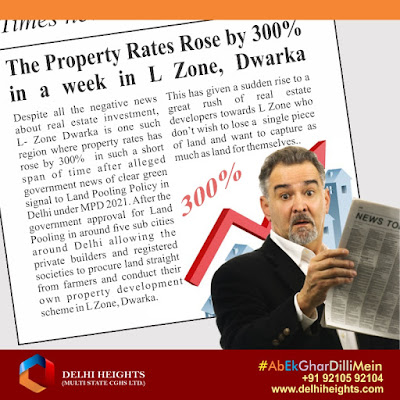L zone, one of the mega projects to be developed around Dwarka is a major reformatory step taken by the government on the path to move towards a sustainable smart city around Delhi. To revive the urban development scenario in Delhi and surrounding areas under Master Plan 2021, government has plans to develop a city that would have all the world class amenities and facilities, however, for the government to meet out the financial challenge in developing the L Zone smart city had to divert its planning towards public private plan in Dwarka.
L Zone property due to planning as well as monetary obligations had to divert its planning of smart city towards the public private partnership. Under the PPP Model Delhi, a government service or private business venture is funded as well as operated through partnership of government and one or more private sector companies.
L Zone property due to planning as well as monetary obligations had to divert its planning of smart city towards the public private partnership. Under the PPP Model Delhi, a government service or private business venture is funded as well as operated through partnership of government and one or more private sector companies.
 |
| L Zone Delhi |
Under PPP, there exists a contract between a public sector authority and a private party, where a private party offer a public service and participate into the substantial financial, technical and operational risk of the project. In certain types of PPP, the cost of using the service is endured by the users of the service and not by the taxpayer.
There are generally two major drivers for PPPs. First of all, PPPs are claimed in order to allow public sector to optimize and use expertise of the private sector in accomplishing a project.
Secondly, the PPP is structured in a manner so that the public sector body looking after to make a capital investment don’t need to make any investment. Rather, the PPP borrowing is done by a private sector company carrying out the project in an effective manner.
Moreover on the PPP projects, the public sector compensate the private sector through availability payments once the facility is established or renewed. It is win-win situation for the both of the sectors.




